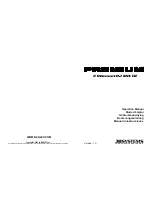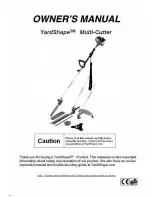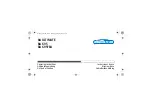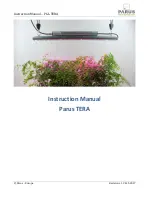
Page 14
www.omlet.co.uk
The role of the beekeeper
Honeybee breeds
Nowadays, there are not nearly enough wild colonies of honeybees to
pollinate all our crops and the shops would soon run out of honey if this
was the only source. The world needs more beekeepers! Even if you
have just one colony, your bees will visit every vegetable plot, orchard and
flower bed in a three mile radius boosting the harvest of beans, apples
and roses no end whilst you will enjoy the most delicious fresh honey
from their collective wandering.
However, unlike conventional domesticated animals such as cats and
dogs, a colony of honey bees is essentially wild and can decide to leave at
any moment. This is what is known as a swarm and is an entirely natural
instinct that all bees have. It is actually a sign that your bees are doing
very well, because it occurs when a colony has grown large enough to be
able to reproduce itself by splitting in two. A swarm of bees consists of
the old queen and a large number of bees. On a warm, sunny day they
leave the hive and a new queen takes over the existing nest. Meanwhile,
the swarm looks for a suitable place to make a new nest.
From a beekeepers point of view, this behaviour is undesirable for two
reasons. Firstly a great many bees are lost and therefore the hive will not
produce much honey that year. Secondly non-beekeepers, tend to find a
large number of bees hanging in a tree or on a lampost while they look
for a new place to live, a bit scary.
With this in mind, the role of the beekeeper is to guide the honeybee
colony to achieve it’s full potential, whilst at the same time managing and
reducing the bees urge to swarm. This can be done, and in fact one of the
great benefits of the Beehaus is that it is designed to make this easy.
Amateur Beekeepers
An amateur beekeeper might have anywhere between 1-40 hives. Over
this number and you have to start spending all your time with the bees.
Commercial Beekeepers
Commercial beekeepers typically have over 40 hives and spend most of their
time tending to them. They may be keeping bees to produce honey or can
earn money by hiring the bees out to farmers for crop pollination. Hiring
colonies is a huge business , especially in America and China where some bee
farmers have literally thousands of hives which they move to wherever they
are needed.
Honeybees are not all the same and vary from country to country in
their size, colour and temperament. The Latin name for all honey bees
is Apis Mellifera. Apis is Latin for “bee”, mellifera comes from the Greek
melli- meaning “honey” and ferre “bear”. The name was possibly given
because the Greeks liked to compare the appearance of bees to bears
who, as made famous by Pooh bear, also love honey.
Within the bee species there are several subspecies which have particular
qualities. Many common honeybees today are mixed breeds created by
beekeepers for desirable qualities such as honey collection, ability to
survive cold winters, good egg laying and calm temperaments, making
them easy to work with.
The Buckfast bee
One of the most famous bee
breeders was a monk called Brother
Adam who made it his life’s work to
create the ultimate honey bee. He
travelled all over the world collecting
queens from wild colonies in remote
locations, which he brought back to
a monastry in Buckfast. His approach
was rigorous and scientific and the
Buckfast bee was subsequently
exported all over the world.
The three main sub species of honey bees available for the beekeeper are
as follows.
The British black bee (Apis
mellifera mellifera)
The British black bee is a relatively
small, dark coloured bee that was
almost wiped out by Isle of Wight
disease. A few beekeepers still
have almost pure strains in the
more remote parts of Britain. It’s
considered to be a hardy bee, able
to cope with the short summers and
long wet winters typical in the UK.
The Carniolan bee (Apis mellifera
carnica pollman)
The Carniolan honey bee is the
native bee of Slovenia, a great
beekeeping nation. It is a dusky
brown colour with lighter brown
stripes. The Carniolan (also known
as Carnica) is a very popular bee
throughout Europe because it has
several desirable qualities. It is a very
gentle bee that is calm and can be
easily worked, making it ideal for
bee keepers who live in urban areas.
It is good at resisting disease and defends the hive strongly against pests
such as wasps. Carniolans are also good at quickly adjusting the size of
the colony according to the available nectar supply. This, combined with
an unusually long tongue for reaching nectar other bees can’t get, results
in colonies of carniolans storing large quantities of honey and pollen.
Italian bee
(Apis mellifera ligustica)
The Italian honey bee has distinctive
yellow striping and is quite a small
bee. Italian queens are very prolific
egg layers and build up big colonies
able to collect a lot of nectar. This
is one of the reasons they are so
popular. They have adapted well to
most climates apart from northern
countries where the cold winters and
wet springs don’t seem to suit them.
They have very relaxed, easy going characters and are good to work with.
Some beekeepers think they have less tendency to swarm making them
good for urban areas. Perhaps most interestingly though is that Italian
drones are considered to be among the most successful at romancing
Queens on mating flights.
Bee Inspector
A bee inspector is a specially trained beekeeper with a large amount of
experience. If you keep bees, then at some point you may have your bees
inspected. Every area has a local bee inspector and it’s a good idea to find
out who your local inspector is. You are required by law to report some
bee diseases to the inspector. You don’t get told off if your bees do have
disease, in fact it’s quite the opposite. By reporting disease you will be
helping reduce the risk of your bees transferring it to other colonies. The
inspectors are managed centrally by the National Bee Unit, visit http://
beebase.csl.gov.uk/ for more information.
An Amateur Beekeeper.
A Commercial Beekeeper.
The Carniolan bee is very popular.
Image: Richard Bartz.
The Buckfast bee can be found all over
the world.
Italian bees have a distinctive
yellow colour.
The British black bee is quite a rare
sight. Image: Rachel Graham.















































